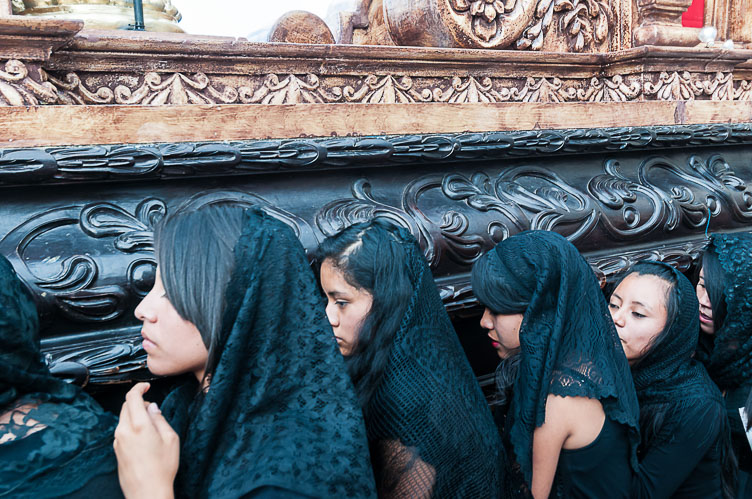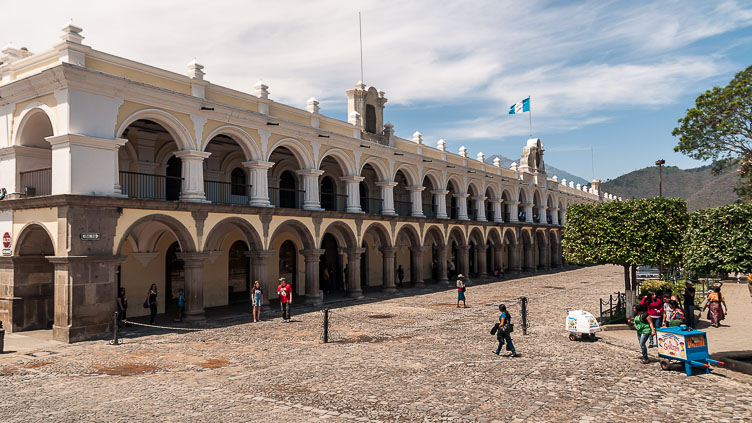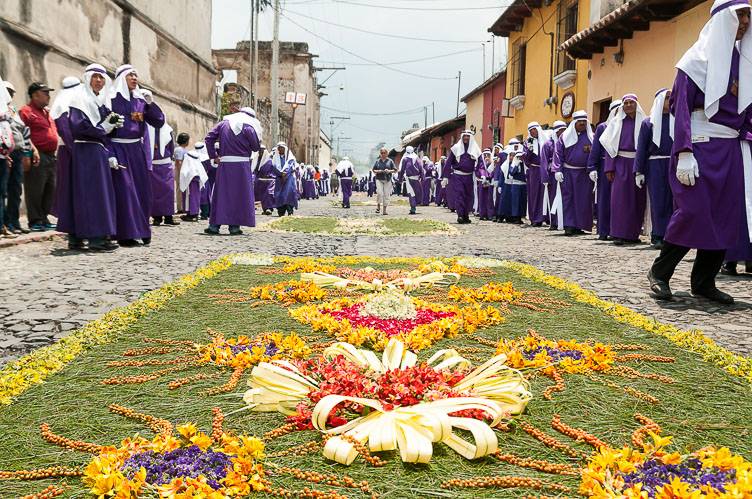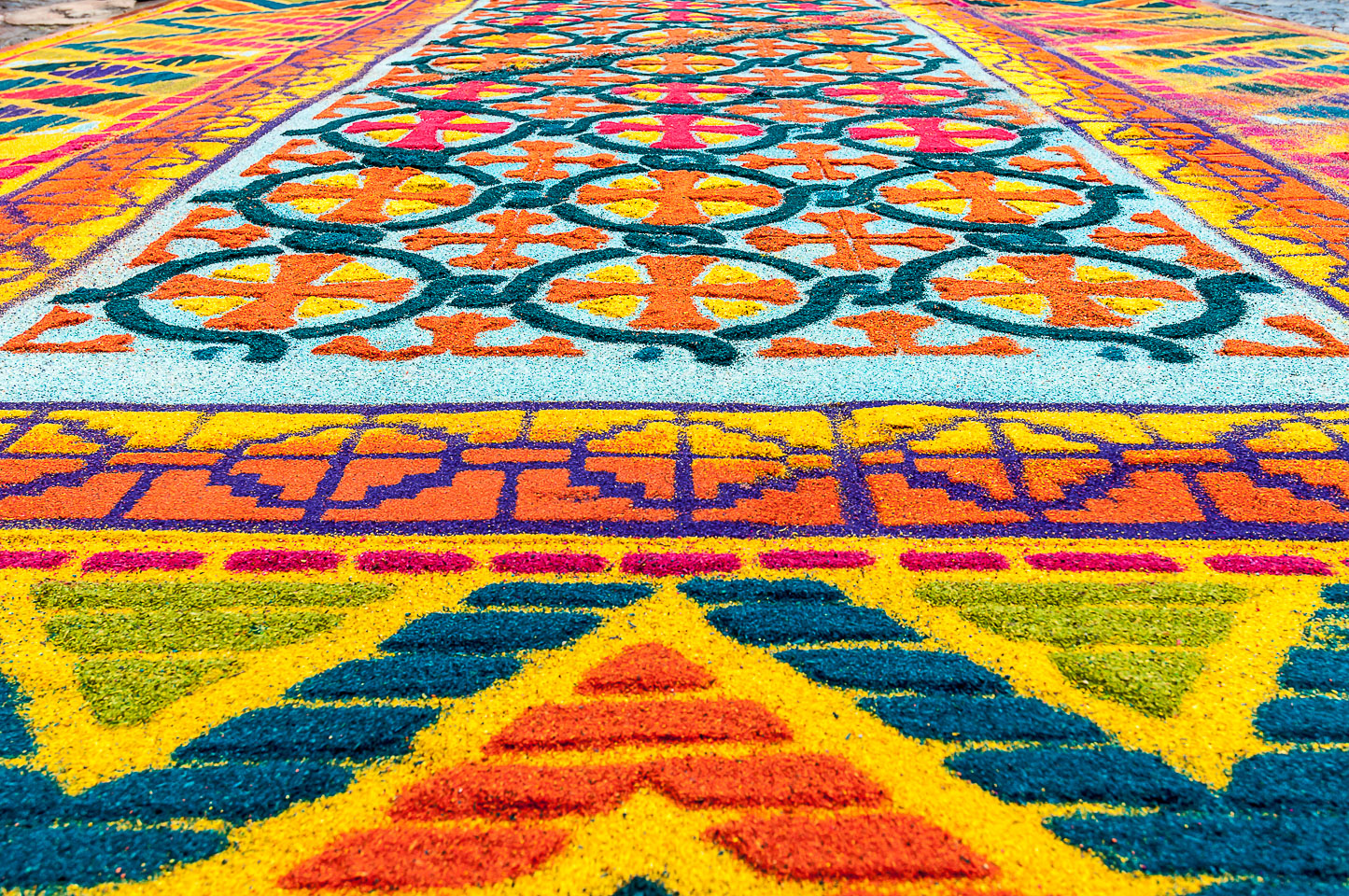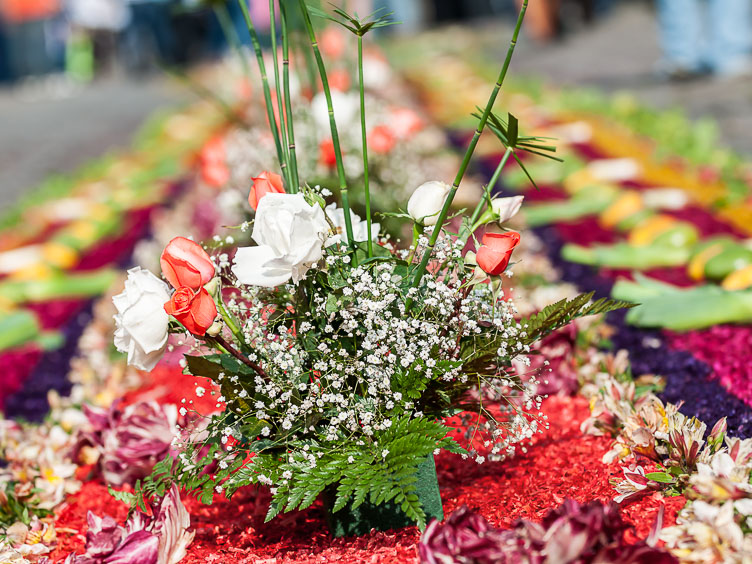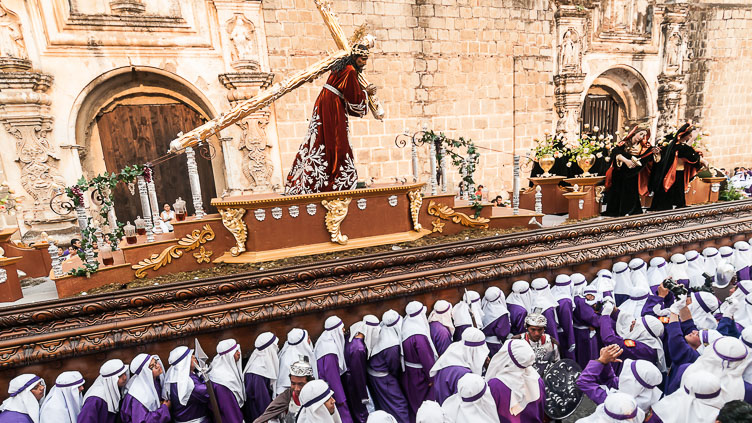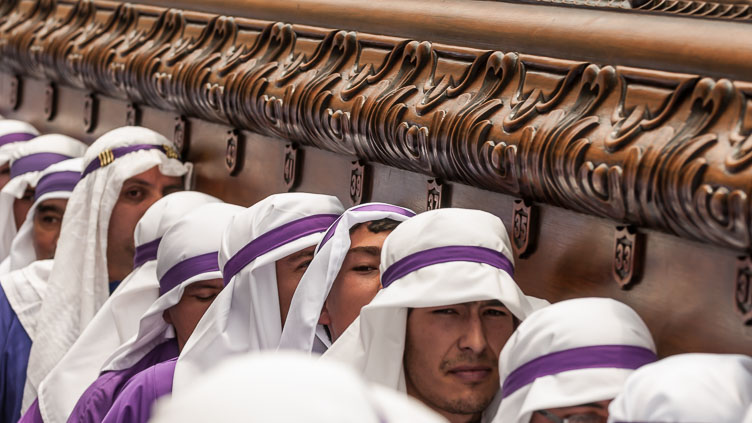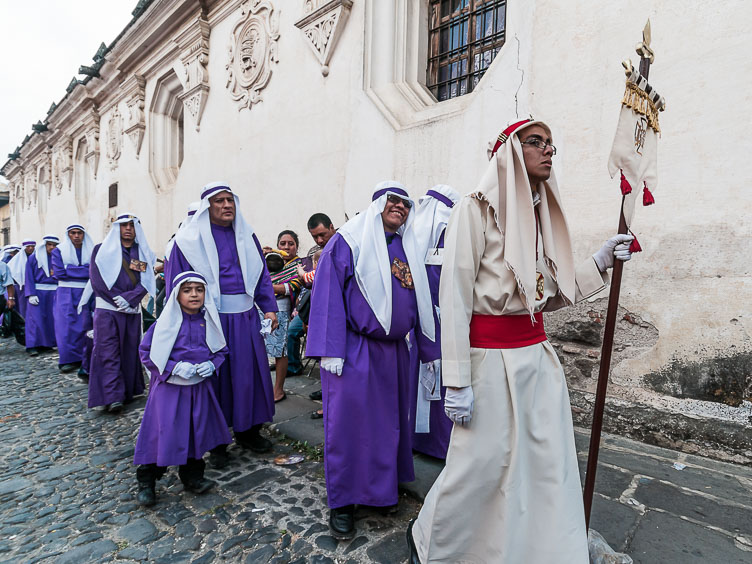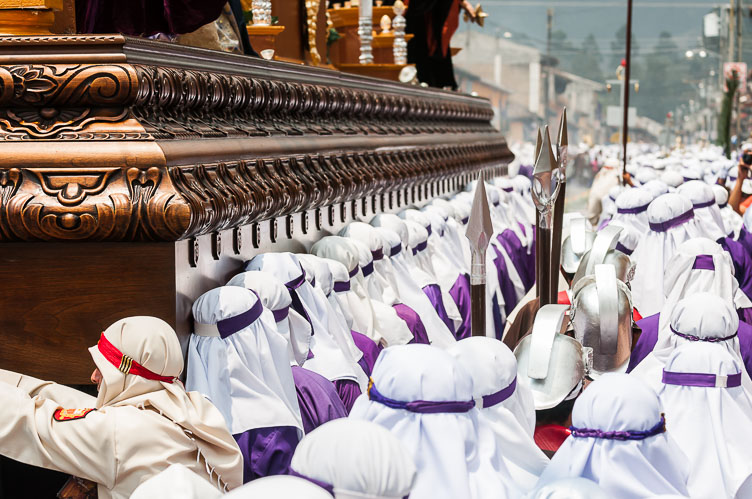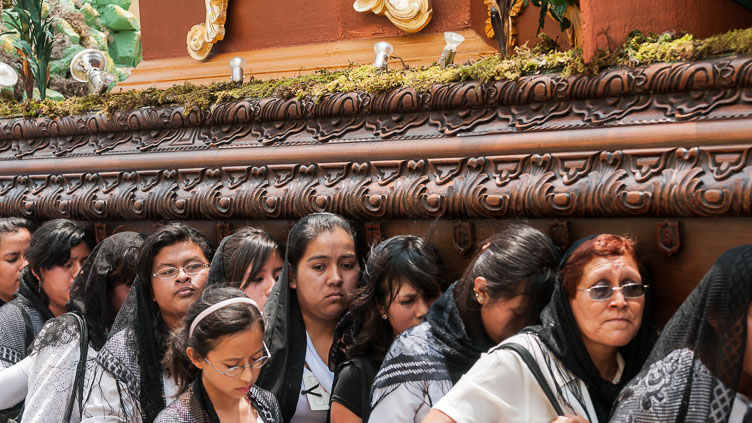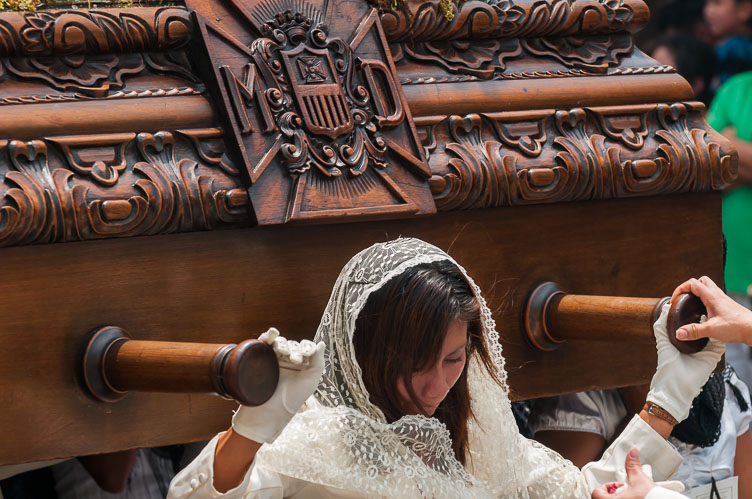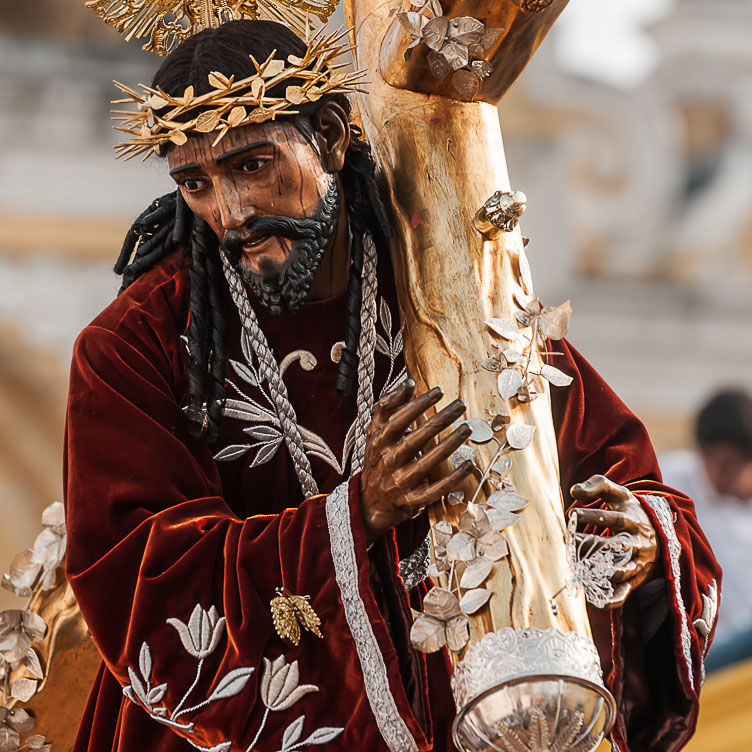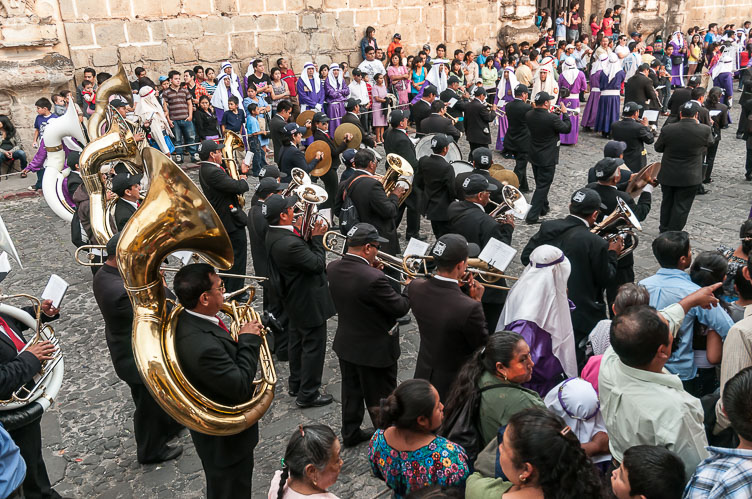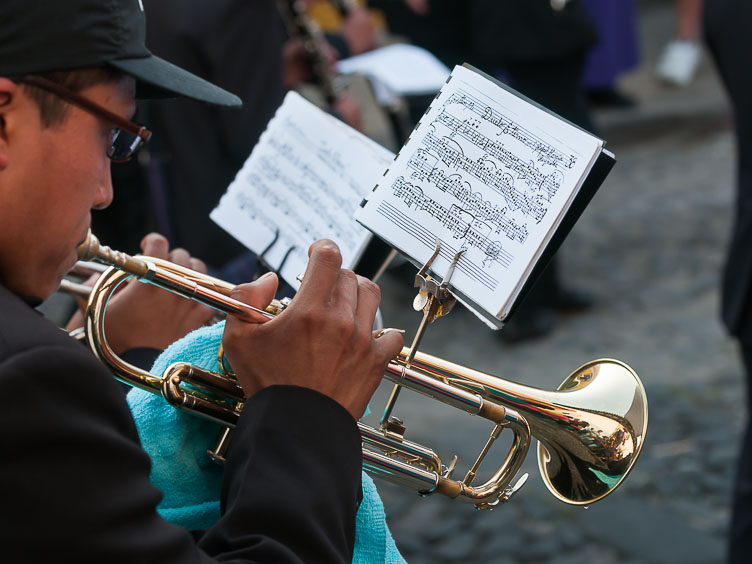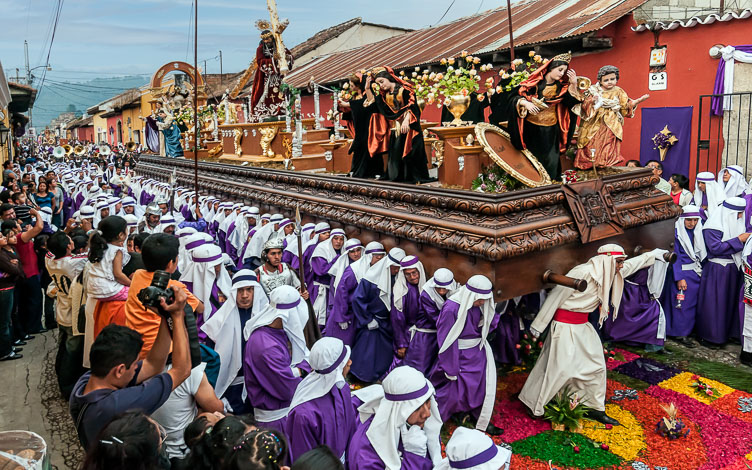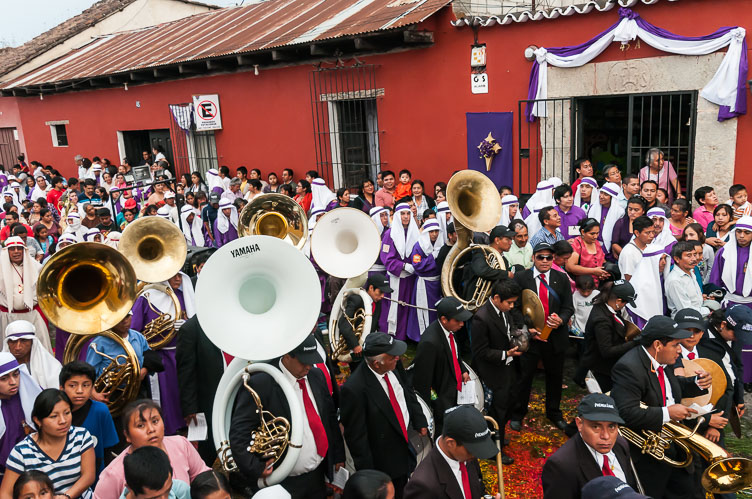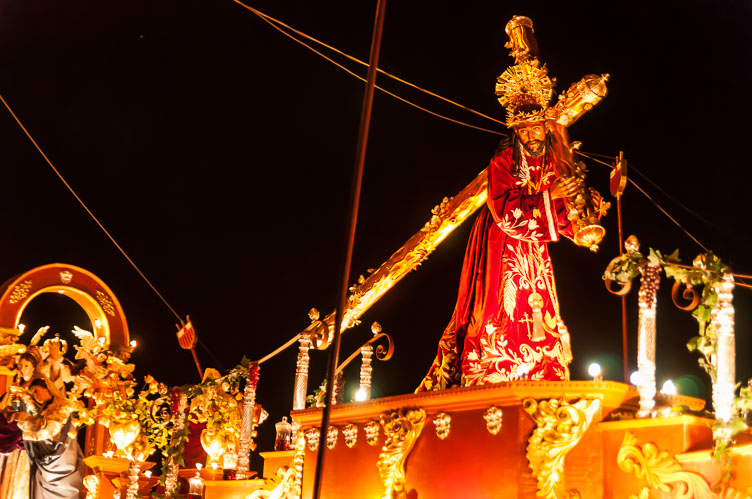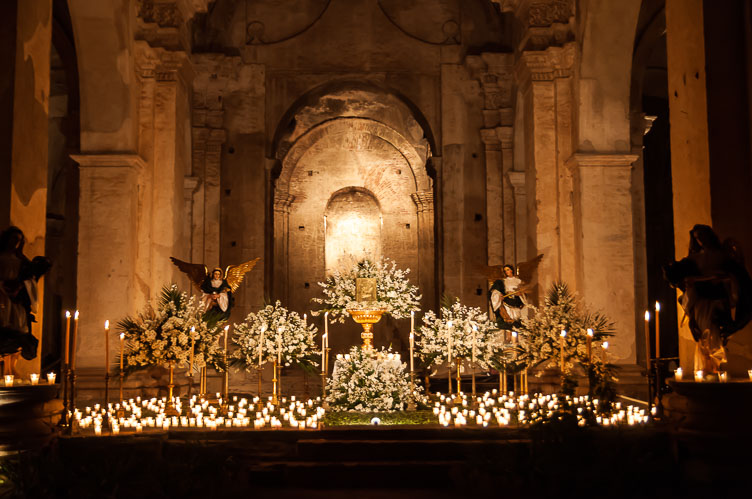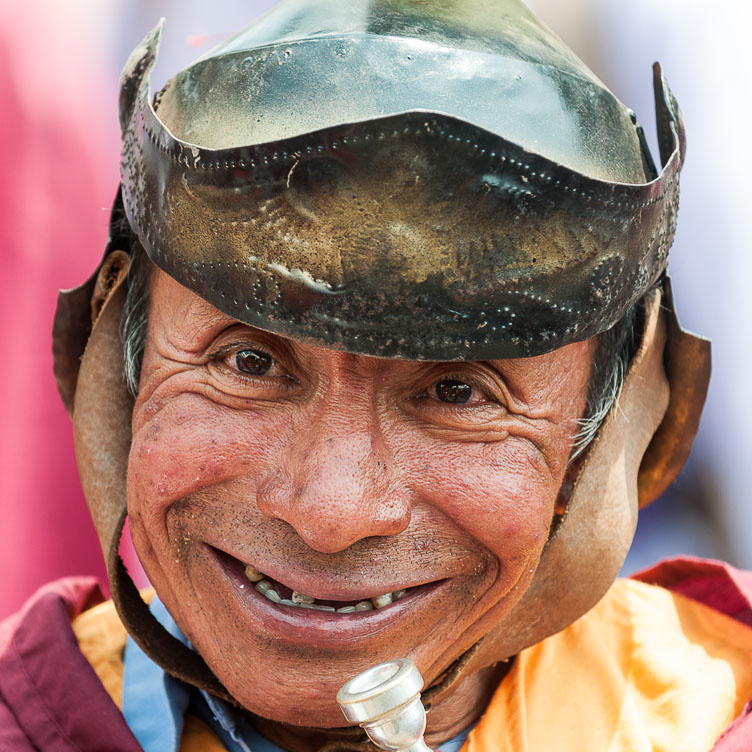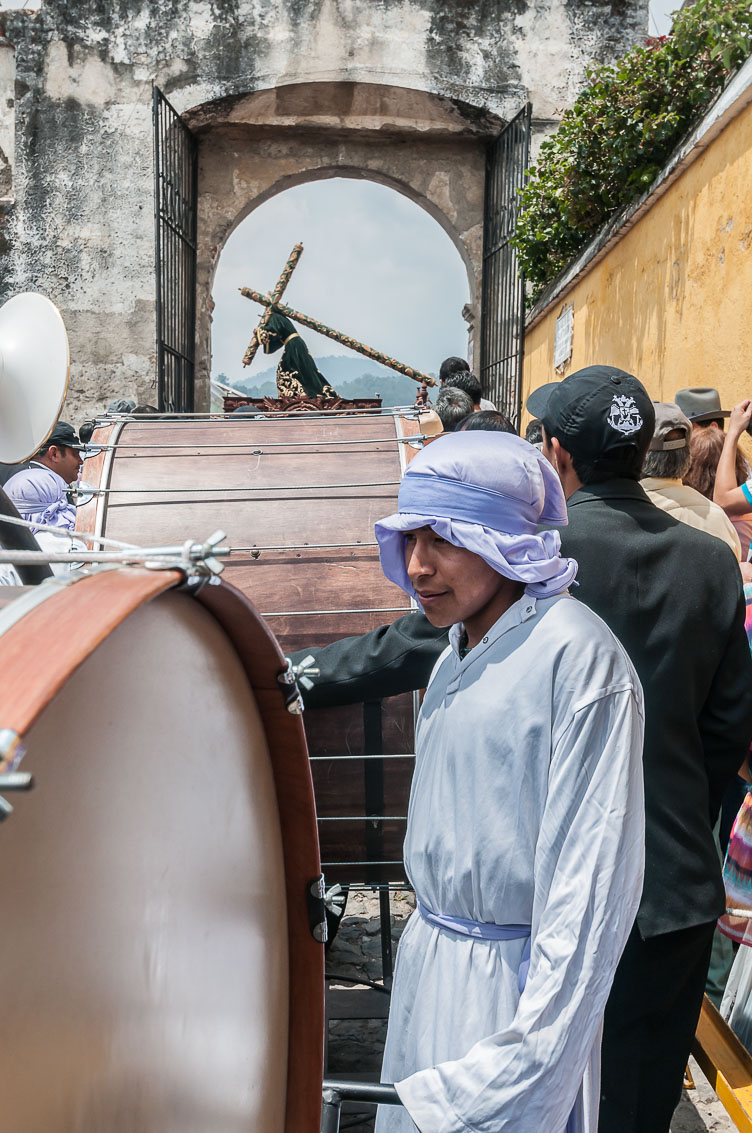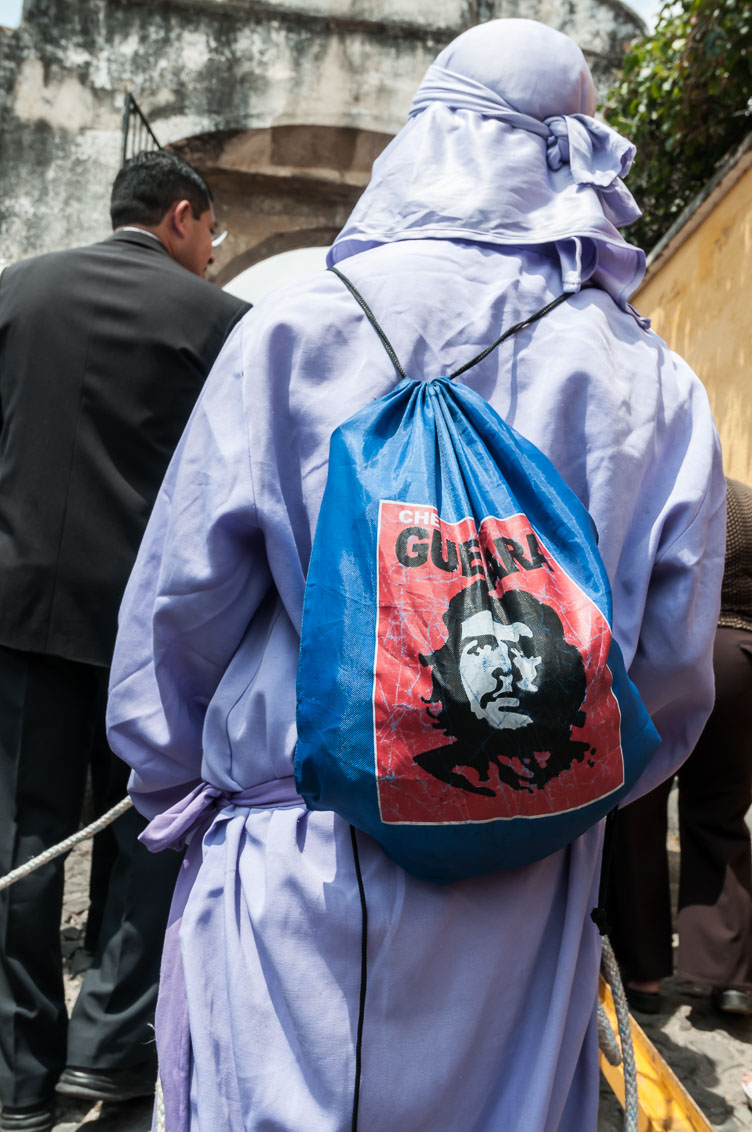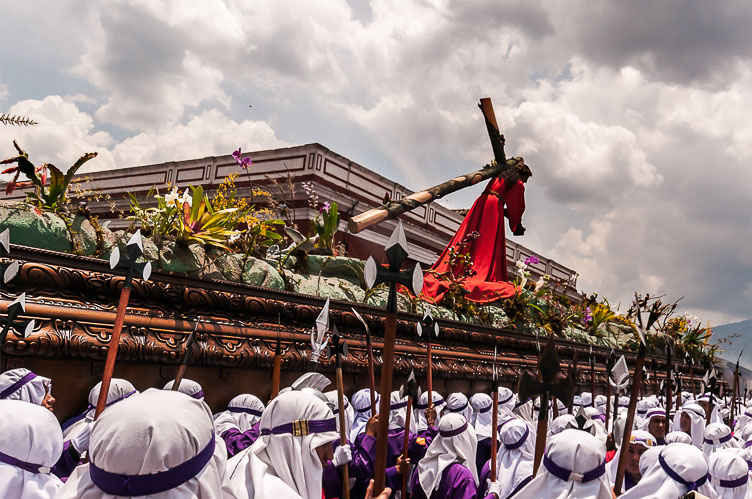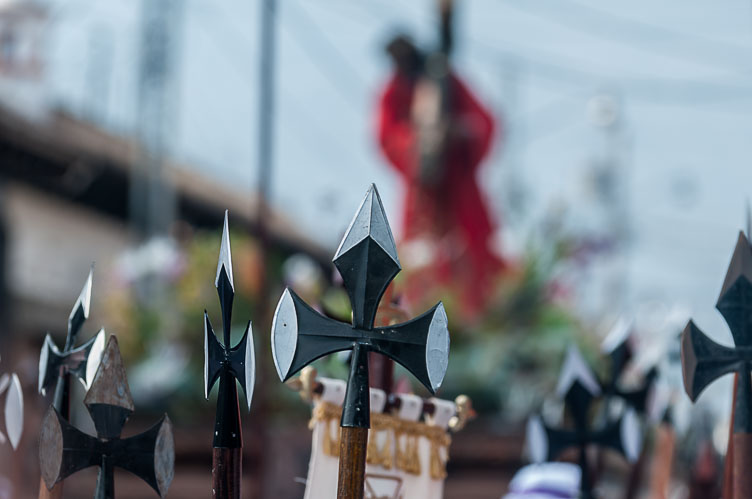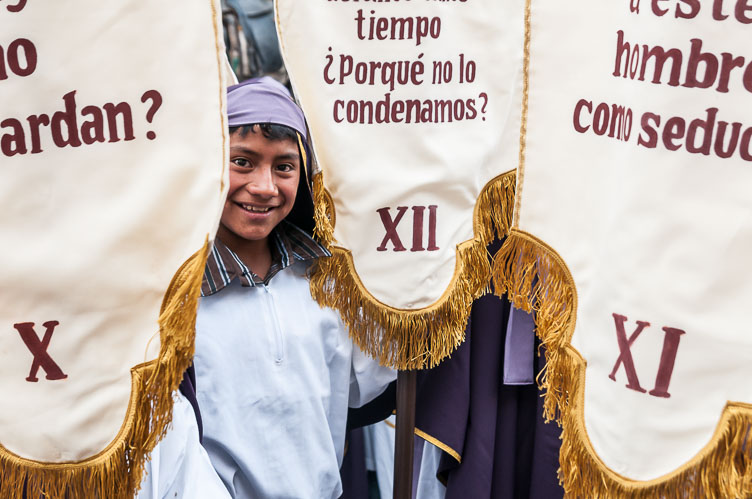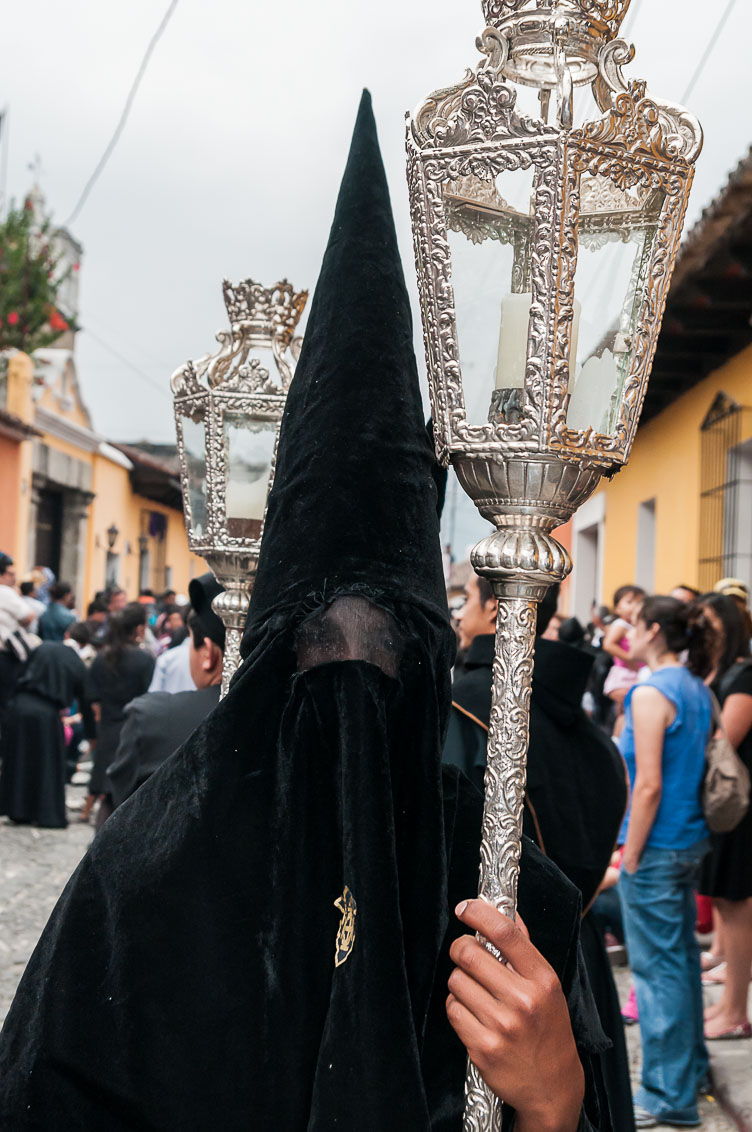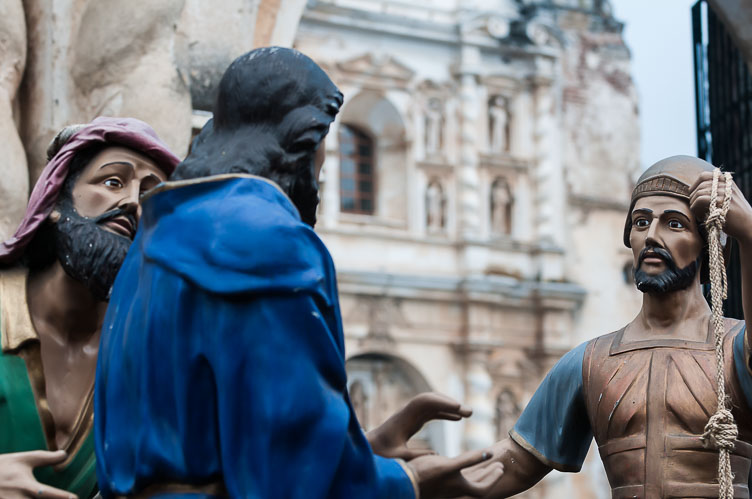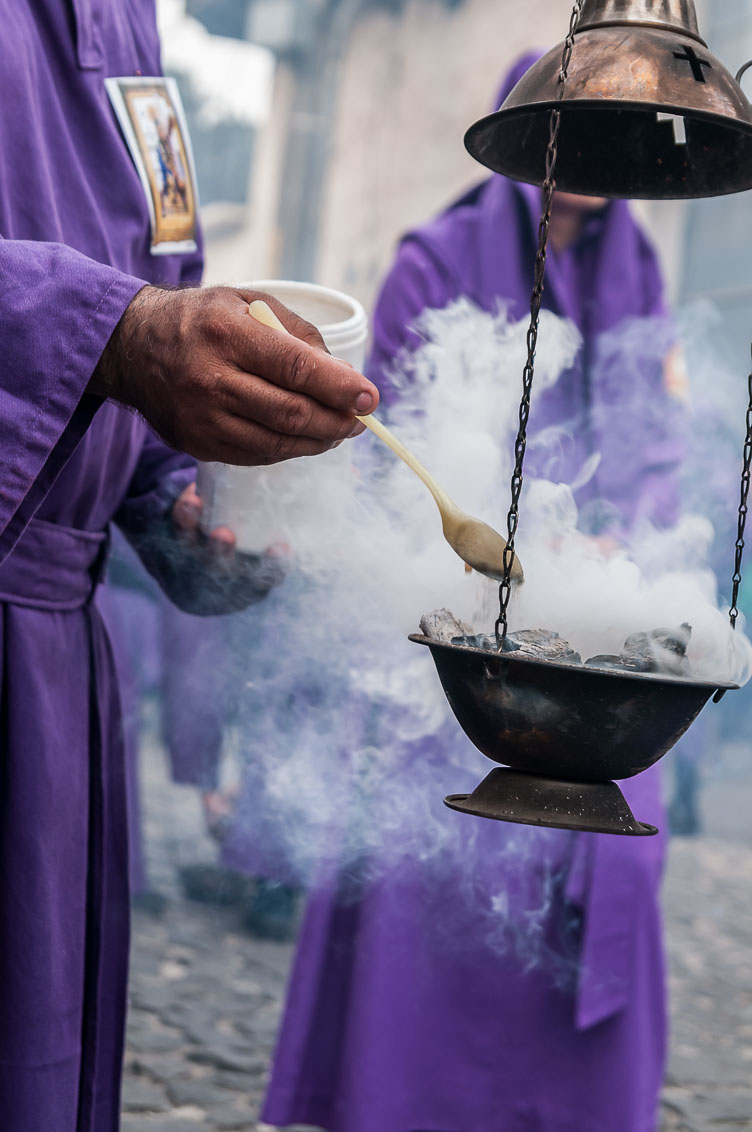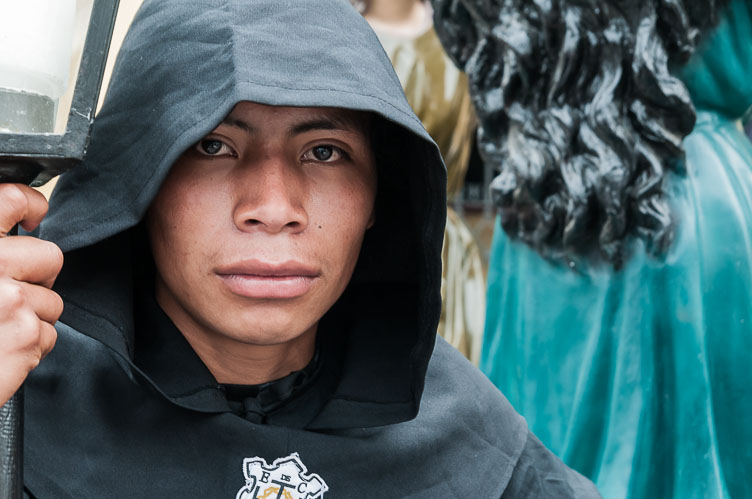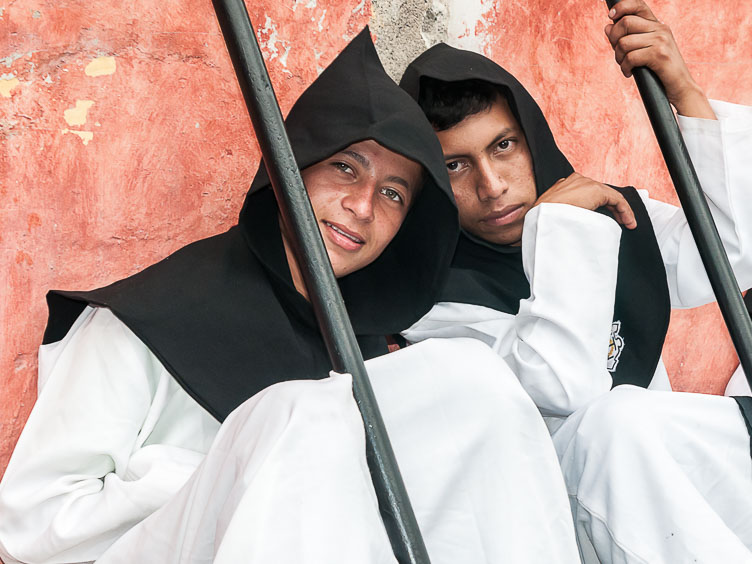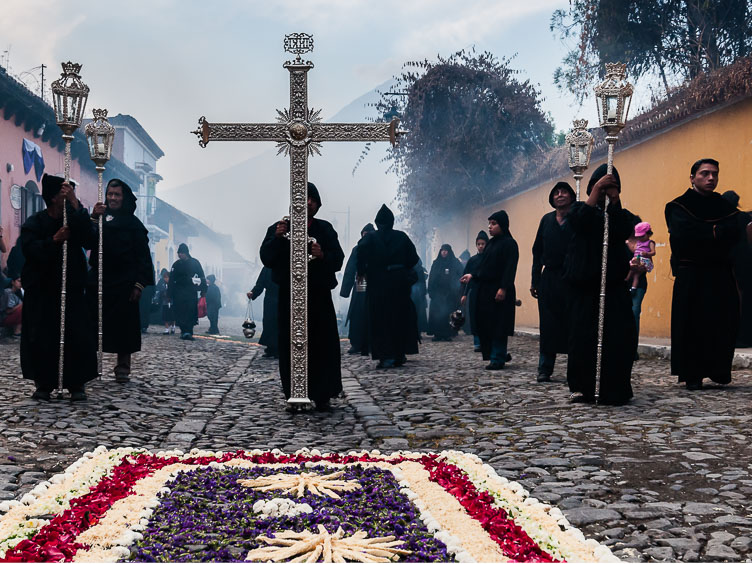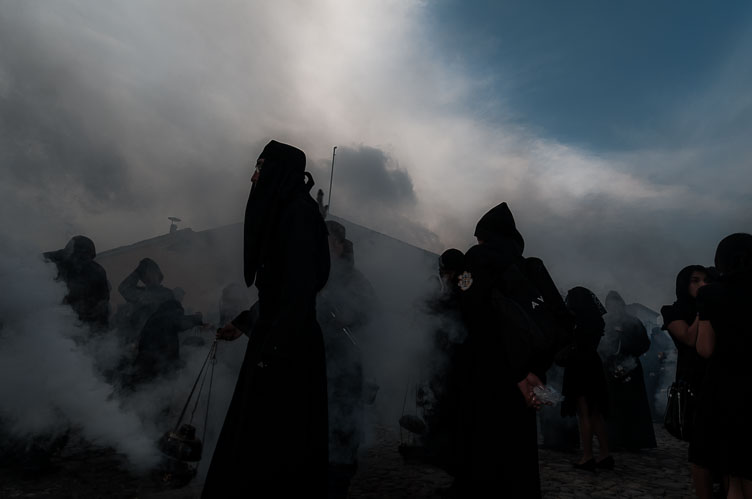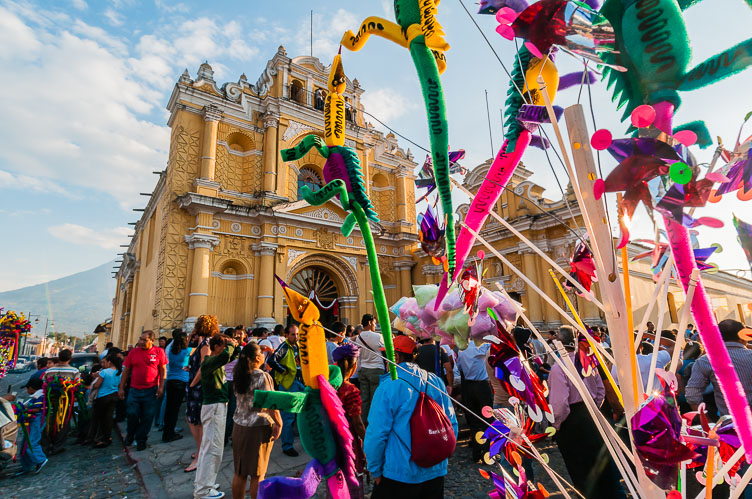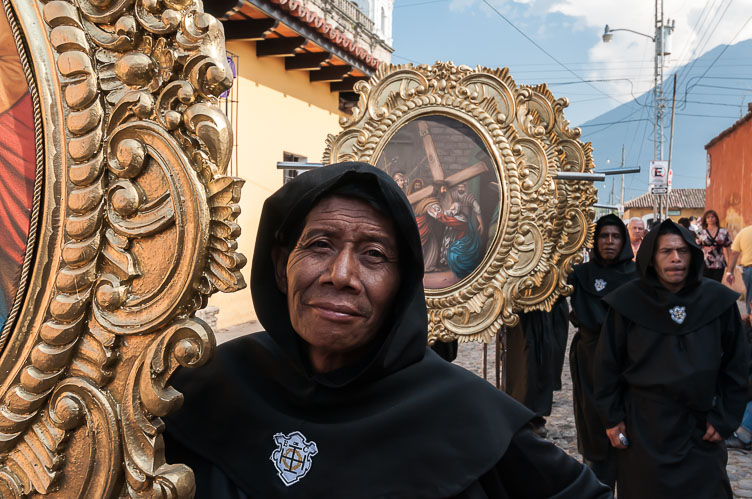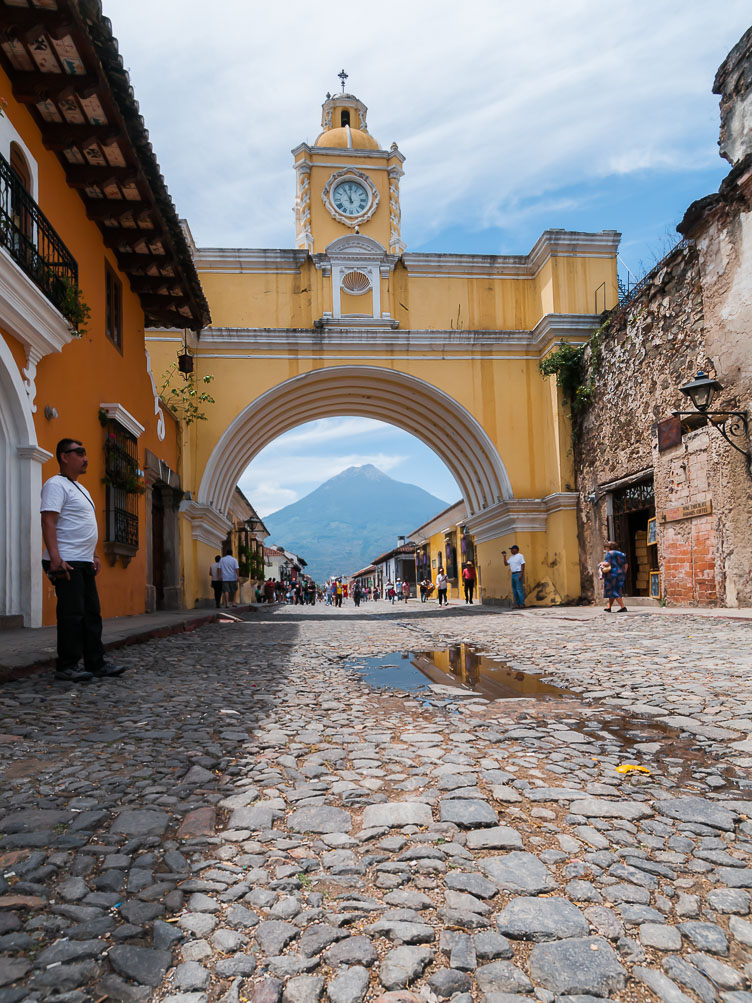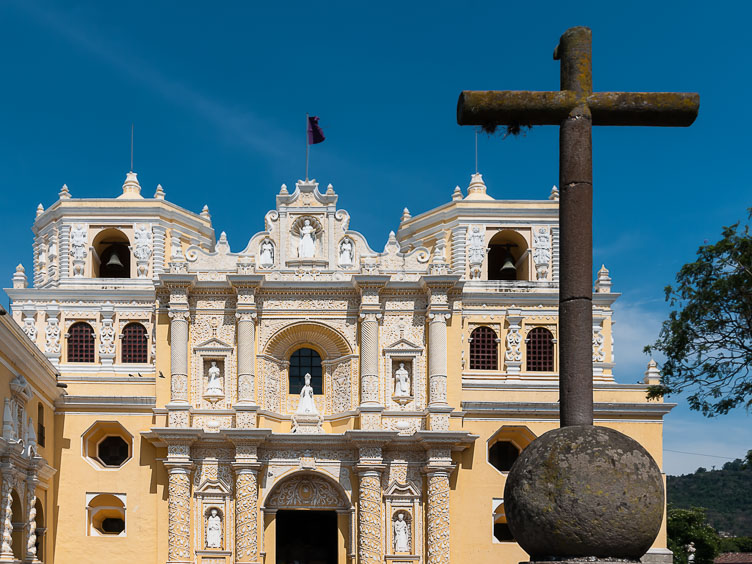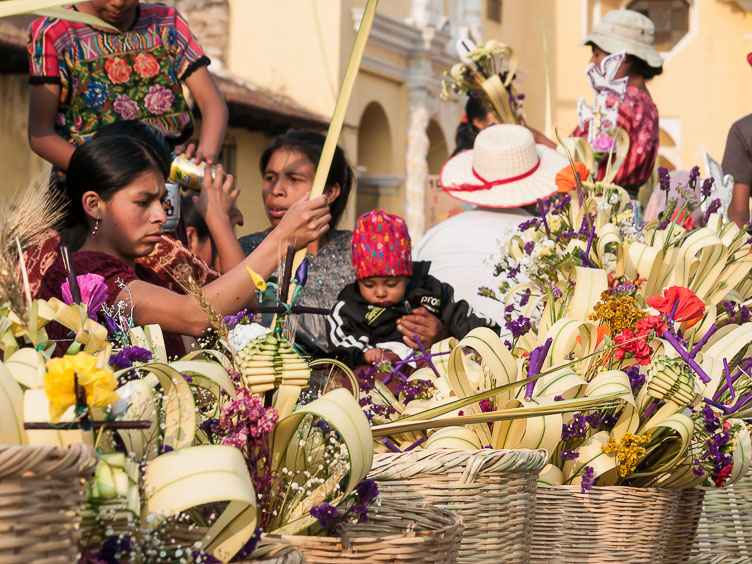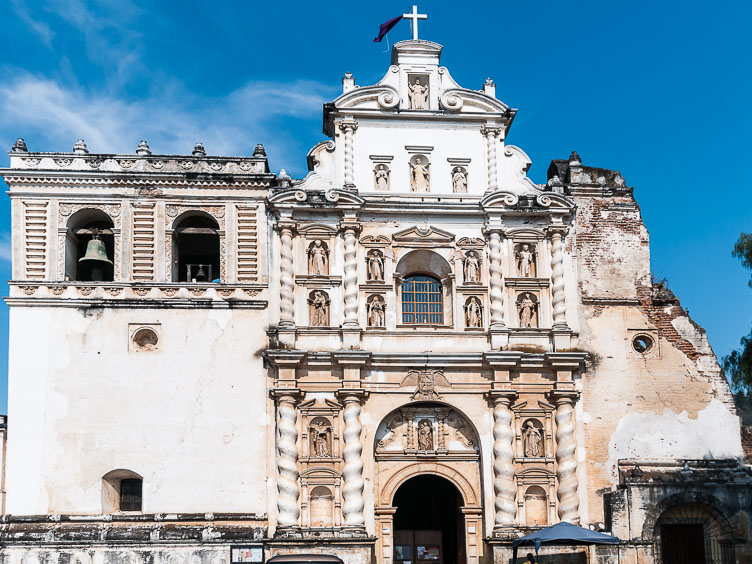I visited Antigua for Semana Santa at the end of a three month trip of Middle America and Cuba. Being there for the festival of Semana Santa formed the colorful highlight of a very diverse and rewarding trip.
Antigua
Antigua Guatemala means "Ancient Guatemala". The city once was the capital of the Spanish colony of Guatemala that included Chiapas (Mexico) and most of Central America. In 1773, an earthquake destroyed much of the town. The Spanish Crown moved the capital to a safer location now Guatemala City. The old capital was ordered abandoned and most people left after the civil servants and the clergy. From then on the city is called La Antigua Guatemala. Since it was largely abandoned there was not much reconstruction and modernization during the centuries after the destruction. That and an early recognition as a monument by the Guatemalan government makes Antigua a wonderfully preserved Spanish colonial city, with the typical street pattern of numbered blocks and a large square that contains the cathedral and the city hall.
Semana Santa
Antigua really shines during the period of Lent, ending with the Holy Week (Semana Santa) when numerous religious celebrations are held. During this week there are multiple daily processions that can last up to twelve hours. Statues of Jesus are carried around on floats that can weigh 3000 kg by up to a 100 bearers in shifts. Each shift has to be made up by men similar in height. When changing bearers the float keeps swinging slowly in the marching rhythm; you can’t stop a weight like that. The shifts whose turn it is after the current one walk in front of the float as are ‘Romans’, trumpeters, some smaller statues, banners and incense carriers. The float is followed by a marching band. In most processions a statue of the Virgin Mary carried by women follows the man's procession. Again with relieve crews and followed by it’s own band. The total length of the procession can be several kilometers.
Processions start and end at a church. Associated with the church is a ‘Hermandad’ a brotherhood. These brotherhoods are not only a religious phenomenon; there is definitely a growing social component. In the streets the people of Antigua make beautiful and artistic carpets (Alfombra’s), out of pine needles or dyed sawdust, further decorated with flowers and even fruits and vegetables. The people at the front of the procession pass them on the sides; finally the bearers of the float trample the carpets.

